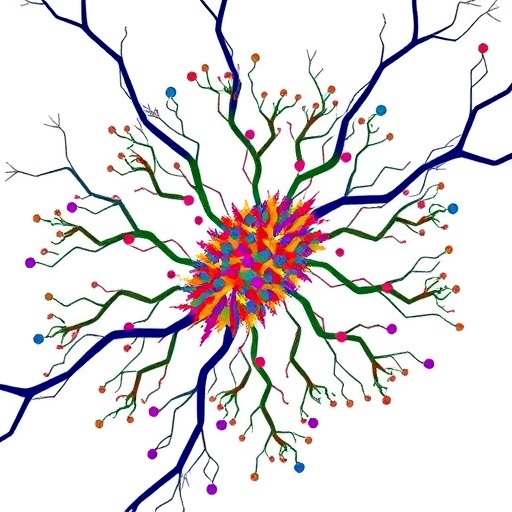Study identifies differences in gut microbiome composition in physically high-functioning vs low-functioning older adults, successfully transfers some of these effects into mice

Credit: Pixabay
BOSTON (Sept. 18, 2019)–A novel new study suggests that the gut microbiome has a role in mechanisms related to muscle strength in older adults. The work, led by researchers at the Jean Mayer USDA Human Nutrition Research Center on Aging (HNRCA) at Tufts, is available as a pre-proof in advance of print in Experimental Gerontology.
The gut-muscle axis, or the relationship between gut microbiota and muscle mass and physical function, has gained momentum as a research topic in the last few years as studies have established that gut microbiota influences many aspects of health. While researchers have begun exploring the connection between the gut microbiome, muscle, and physical function in mice and younger adults, few studies have been conducted with older adults.
To gain insight into this population, the researchers compared bacteria from the gut microbiomes of 18 older adults with high-physical function and a favorable body composition (higher percentage of lean mass, lower percentage of fat mass) with 11 older adults with low-physical function and a less favorable body composition. The small study identified differences in the bacterial profiles between the two groups.
Similar bacterial differences were present when mice were colonized with fecal samples from the two human groups, and grip strength was increased in mice colonized with samples from the high-functioning older adults, suggesting a role for the gut microbiome in mechanisms related to muscle strength in older adults.
Specifically, when compared to the low-functioning older adult group, the researchers found higher levels of Prevotellaceae, Prevotella, Barnesiella, and Barnesiella intestinihominis–all potentially good bacteria–in the high-functioning older adults and in the mice that were colonized with fecal samples from the high-functioning older adults.
No significant differences in body composition or endurance capacity were observed in the colonized mice; however, the researchers note that the length of the intervention period was short and these data may warrant further study.
“While we were surprised that we didn’t identify a role for the gut microbiome on the maintenance of body composition, with these results we now start to understand the role of gut bacteria in the maintenance of muscle strength in older adults,” said Michael Lustgarten, last and corresponding author on the study and a researcher in the Nutrition, Exercise Physiology & Sarcopenia (NEPS) Laboratory at the HNRCA. “For example, if we were to conduct an intervention to increase Prevotella levels in the gut microbiome, we would expect to see an increase in muscle strength if these bacteria are involved. Prevotella’s role in the maintenance of muscle strength in older adults is one area we expect to continue to explore.”
“As we age, body composition, muscle strength, and lean mass all decrease,” said first author Roger Fielding, director of the NEPS Laboratory at the HNRCA. “Identifying differences in bacteria present in the high-functioning and low-functioning groups in this study moves us toward a fuller understanding of both the gut microbiome and healthy aging.”
For the study, the researchers measured lower extremity function, mobility, and strength in the sedentary older adult group (ages 70-85) at the first and one-month study visits. In the mice, they measured body composition with quantitative magnetic resonance imaging, and grip strength and treadmill endurance capacity to test physical function. Fecal samples from the older adults were transplanted into young, gender-matched germ-free mice. Four weeks after fecal transfer, the researchers measured body composition, physical function, and gut microbiome in the 18 mice colonized with fecal samples from the high-functioning human group and the 18 mice colonized with fecal samples from the low-functioning human group.
The authors note the small sample size and brief time period as potential study limitations.
###
Fielding is also a professor at the Friedman School of Nutrition Science and Policy at Tufts and Tufts University School of Medicine
Additional authors on this study are Andrew R. Reeves, Christine Liu, and Brittany B. Barrett, HNRCA; and Ravi Jasuja, Boston Claude D. Pepper Older Americans Independence Center, Brigham and Women’s Hospital, Harvard Medical School.
This work was supported by awards from the National Institutes of Health’s National Institute on Aging (K01AG050700), the Boston Claude D. Pepper Older Americans Independence Center (5P30AG031679), and the U.S. Department of Agriculture’s Agricultural Research Service. The content of this announcement is solely the responsibility of the authors and does not necessarily represent the official views of the National Institutes of Health or the U.S. Department of Agriculture.
Fielding, R.A., Reeves, A.R., Jasuja, R., Liu, C., Barrett, B.B., Lustgarten, M.S. (2019) Muscle strength is increased in mice that are colonized with microbiota from high-functioning older adults. Experimental Gerontology. Advance online publication. doi: 10.1016/j.exger.2019.110722
About the Jean Mayer USDA Human Nutrition Research Center on Aging at Tufts University
For three decades, the Jean Mayer USDA Human Nutrition Research Center on Aging at Tufts University has studied the relationship between good nutrition and good health in aging populations. Tufts research scientists work with federal agencies to establish the Dietary Guidelines, the Dietary Reference Intakes, and other significant public policies.
Media Contact
Lisa LaPoint
[email protected]
Related Journal Article
http://dx.





